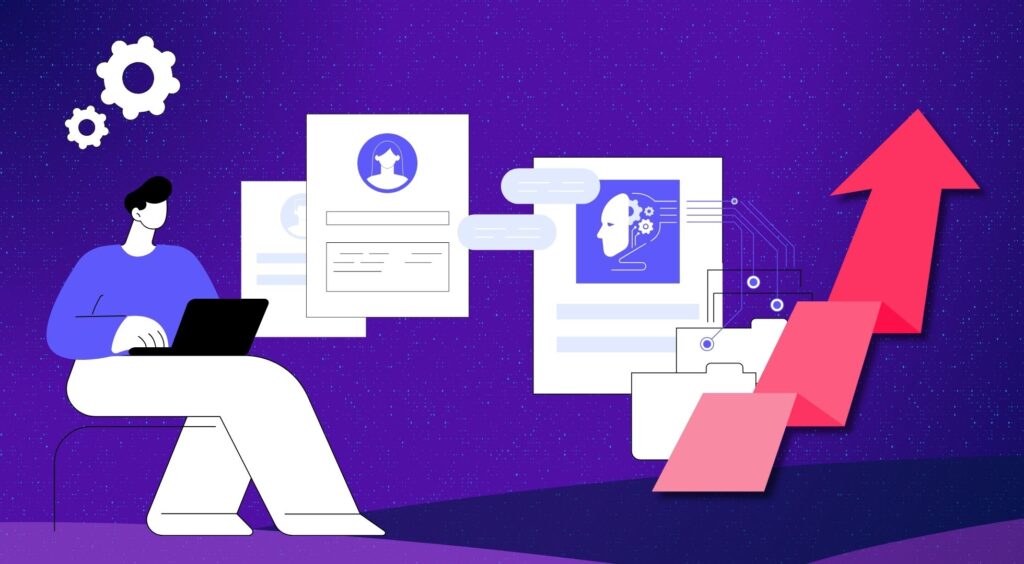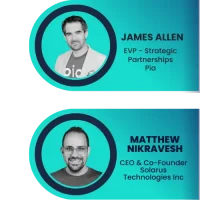How MSPs Use Workflow Automation to Scale Smarter and Deliver Better Service


Larissa Varela
Pia, Global Director of Marketing
We hear the same story from MSP owners from time to time, “We’re drowning in our own success.” You’ve grown from 50 to 200 clients in just a few years, but your operations haven’t kept pace. Tickets are backing up, techs are burning out, and SLAs are starting to feel more like suggestions than commitments.
You can’t scale a managed service business by simply piling on more tickets, taking on more clients, and increasing the pressure on your team. At some point, the cracks start to show, SLA deadlines are missed, technicians become overloaded, and clients begin to feel the impact.
That’s why workflow automation matters. And not the overhyped kind you see in software demos, but a meaningful shift in how your MSP runs day to day, grows sustainably, and competes effectively.
What Workflow Automation Really Means for MSPs
Most people think of automation as simple task elimination, like resetting passwords or sending out alert emails. But that’s only the surface.
Real workflow automation for MSPs functions more like a digital operations manager. It works in the background 24/7, ensuring the right processes fire off at the right times, across multiple systems, with minimal human oversight. It’s not a plug-and-play bot or a simple script. It’s a scalable framework that executes workflows with precision.
When a specific condition is triggered, like a new user request, a failed patch, or a disk running low, automation kicks off a predefined sequence of actions. It’s not just a single task being handled, but a coordinated workflow spanning multiple tools and checkpoints, all working toward one consistent, reliable outcome.
The key isn’t just doing things faster. It’s doing them consistently, at scale, across dozens or hundreds of clients, without requiring more hands on deck. That’s what makes automation a strategic advantage.
Where MSPs Struggle Without Automation
It starts subtly with a few growing pains and some miscommunications. But as your client base expands, so do the cracks in your operations:
● What should be a repeatable, 4-hour setup often turns into a multi-day scramble depending on who’s handling it. Steps get skipped. Documentation gets missed. Clients feel the lack of structure, and it sets the wrong tone from the start.
● When Sarah handles onboarding, clients get the Sarah experience. When Mike covers for her, they get something completely different. Neither is necessarily wrong, but inconsistency kills scalability. Your 50th client shouldn’t get a worse experience than your 5th just because your team is busier.
● Most ticketing systems show an “assigned” status, but that doesn’t mean a ticket is actually progressing. Priority issues can languish next to routine ones. Without smart triage, even critical client needs can slip.
● This area is often reactive. You’re constantly juggling update schedules, trying not to interrupt users or break something in the process. When a patch fails, you’re left trying to diagnose the fallout instead of preventing it.
● Your best, most senior techs are spending time on tasks like printer setups and password resets. These aren’t bad jobs, but they’re not the best use of expensive talent. It’s a recipe for burnout and attrition.
What Workflow Automation Looks Like in Practice
One Pia partner, a regional MSP focused on healthcare clients, reduced client onboarding time by over 60% using prebuilt automation. Tasks that once spanned multiple departments now complete in under five hours, with full audit trails, fewer errors, and improved customer satisfaction.
Here’s where automation changes the game entirely. Instead of firefighting these issues as they arise, you eliminate the conditions that create them. When you remove human variability from routine tasks, three things happen: your service becomes predictable, your capacity multiplies, and your team focuses on work that actually moves the needle.
Smart ticket routing ensures that tickets go to the right person, the first time. The system evaluates ticket details, client type, technician availability, and historical data before making the assignment. Escalations are built-in, and routing logic gets smarter with every interaction.
Password resets and user account changes are automated from start to finish. The system validates the request, confirms it against policy, executes the task, updates the system of record, and notifies the end user. Your techs don’t need to touch it unless something breaks.
Onboarding workflows standardize how new clients or new users get set up. That includes provisioning, access control, policy enforcement, monitoring setup, welcome communications, and more. Every client gets the same consistent, high-quality experience. One of our partners shared in their testimonial that this approach reduced onboarding time by more than half, improved accuracy, and set the right tone with clients from day one.
Patch management is transformed from fire drill to strategy. Patches are tested, approved, and deployed based on client needs. Maintenance windows are respected. Failures are flagged instantly. Reporting is automated.
These aren’t isolated improvements. Every automated workflow creates capacity that multiplies across your entire operation. But the real transformation goes deeper than time savings.
What MSPs Gain Beyond Time Savings
Yes, automation saves time. But for growing MSPs, the bigger win is what you can do with that time and the operational maturity it unlocks.
When your day-to-day is running smoothly and predictably, you gain the confidence to offer more to your clients. You can promise tighter SLAs, build proactive services, and explore new verticals without needing to double your headcount.
Your pricing strategy evolves from selling time to selling outcomes. Instead of billing $150/hour for password resets and user provisioning, you can offer “Complete User Lifecycle Management” as a monthly, per-user package, knowing your automated workflows handle 90% of the work. Clients prefer predictable costs over surprise invoices, and you prefer predictable margins over time-and-materials uncertainty. When a client onboarding that once took 12 billable hours now runs automatically in 5 hours, you can price based on the value delivered rather than the time consumed.
Beyond pricing flexibility, automation opens up entirely new revenue streams. Compliance transforms from cost center to profit center. Take HIPAA compliance for healthcare clients as an example. Instead of manually documenting every access change and security update, automated workflows create complete audit trails while executing the actual work. What used to require dedicated compliance hours now runs in the background, giving you detailed reporting clients will pay premium rates for. The same applies to SOC 2 controls, PCI requirements, or industry-specific regulations. When compliance happens automatically, it becomes a sellable differentiator rather than an operational burden.
Most importantly, your people get to focus on what they do best, such as high-value tasks, strategic conversations, and creative problem-solving. That’s how you retain top talent and build a culture of excellence.
Avoiding the Pitfalls of Generic Tools
Too many MSPs start with generic automation tools that aren’t built for the realities of managed services. These platforms often require heavy customization, lack native PSA integration, and fall short on compliance and scalability. MSPs deserve AI-driven automation platforms that support growth rather than create overhead.
How to Get Started with Workflow Automation
Start small, but smart. The best automation strategies begin with high-volume, low-complexity workflows. Here’s a simple roadmap to start workflow automation:
- Pick one problem that’s eating up hours every week, whether it’s password resets, onboarding, patch updates, and automate that first. Prove the value by showing your team how much time was saved and how smoothly it ran.
- Before automating, map the current process rather than just replicating what you have. Then, streamline it. Many processes are broken before automation gets involved, so fix them first.
- Bring your techs into the process early. Their experience will help avoid missteps, and their involvement increases adoption. When the team sees automation working for them, not replacing them, they’ll buy in fast.
- Finally, track everything. From resolution times to client satisfaction, every metric matters. You’ll not only improve operations, but you’ll also build the business case to expand automation further.
Common Questions MSPs Ask About Workflow Automation
As MSPs explore the potential of workflow automation, several key questions often emerge during the evaluation process:
● How long does it take to implement automation? Most MSPs see their first automated workflow running within 48 hours. A complete automation framework typically takes 2-4 weeks to deploy, depending on your existing tool stack and process complexity. The key is starting with one high-impact workflow and expanding from there.
● What if we already use a PSA or RMM tool? Pia integrates with most major systems and builds on your existing workflows.
● Do we need a developer to set this up? No. Pia offers a low-code interface designed for MSP teams.
The Competitive Edge of Smarter Operations
The MSP landscape is consolidating around operational efficiency. While some MSPs are still manually managing client environments, others are using automation to handle 3x the client load with the same team size. The gap widens every quarter. MSPs with mature automation frameworks are winning larger contracts, maintaining higher margins, and scaling without the typical growing pains that force others to plateau or sell.
If your competitors are automating, they’re gaining capacity and improving margins. If they’re not, this is your moment to lead. Either way, automation is no longer optional but foundational.
The MSPs winning today aren’t necessarily working harder. They’re working smarter.
Want more examples? Read our article on How MSPs Use AI to Improve Customer Service.
Why We Built Pia for MSPs
We created Pia because we’ve been in your shoes. We’ve seen the disconnect between what MSPs need and what generic automation tools deliver. Too many solutions focus on patchwork integrations or one-size-fits-all logic.
Pia is different. It’s purpose-built for MSPs, designed to handle real-world processes, client complexity, and compliance out of the box.
It includes over 60 prebuilt workflows. It features smart routing powered by AI. It plugs into your PSA and RMM stack in minutes, not weeks. And it gives you full control without requiring developers to tailor and scale workflows to match how your business actually runs.
Whether you’re onboarding a new client or triaging hundreds of tickets, Pia is built to make that process seamless, scalable, and profitable.
Take the Next Step
If you’re ready to explore automation, start with your biggest operational bottleneck. Pick a process that causes headaches every week. Clean it up, build the workflow, and measure the impact.
If you want to see how Pia fits into that picture, we’d love to show you. A quick demo can help you visualize how intelligent automation could be deployed in your environment.
But more importantly, don’t wait. Every week you delay, your competitors get more efficient. The MSPs setting the pace today are the ones embracing automation. Schedule a live demo with Pia today and join them.
More to explore

Generative AI vs. agentic AI: What MSPs need to know
Explore how agentic AI is reshaping MSP operations—acting as an autonomous teammate that makes real-time decisions, reduces manual effort, and scales service delivery intelligently.

Introducing Pia Integration with Nilear MTX Pods
Pia now integrates with Nilear’s MTX Pods, bringing AI-driven triage and automation to dispatch and workflow tools—helping MSPs streamline service delivery like never before.

How MSPs Can Use AI to Improve Customer Service
Discover how AI helps MSPs resolve issues faster, scale support without more headcount, and deliver personalized service that drives loyalty—all while reducing operational costs.
